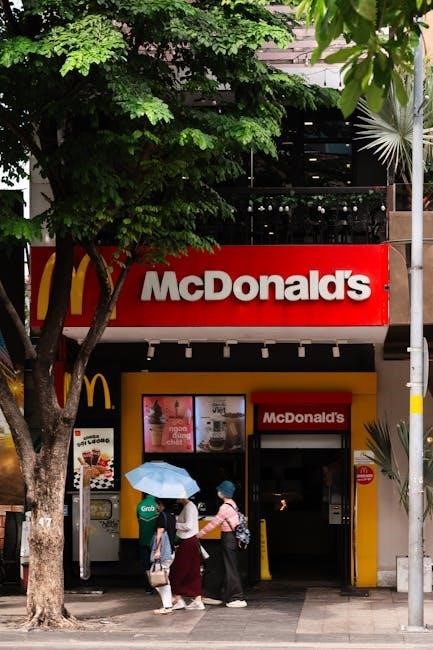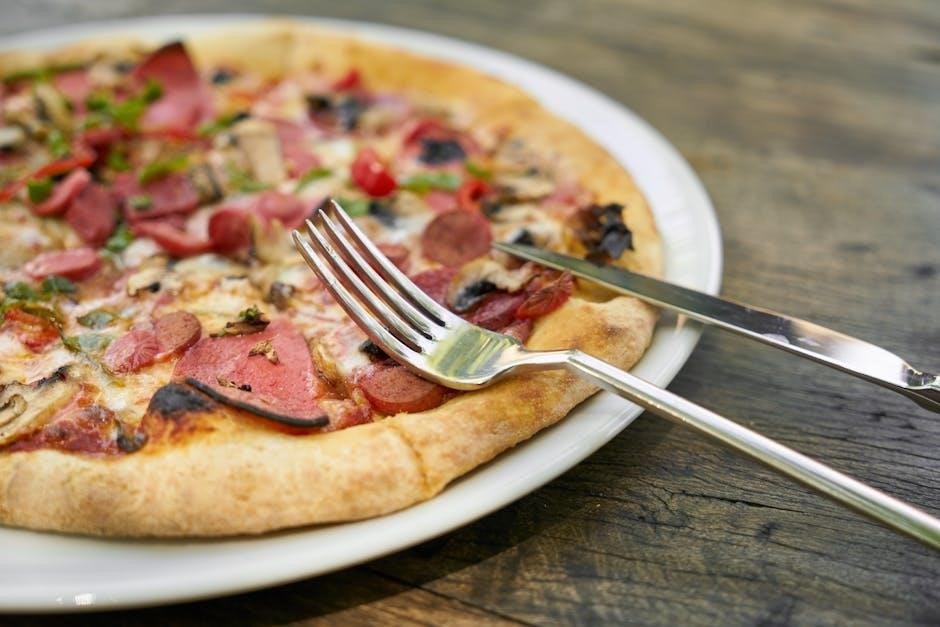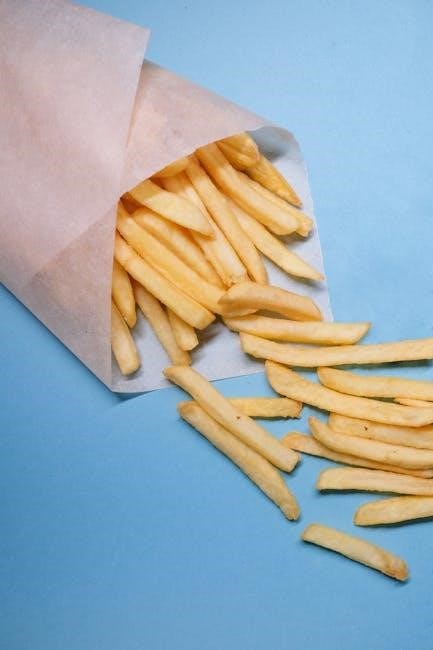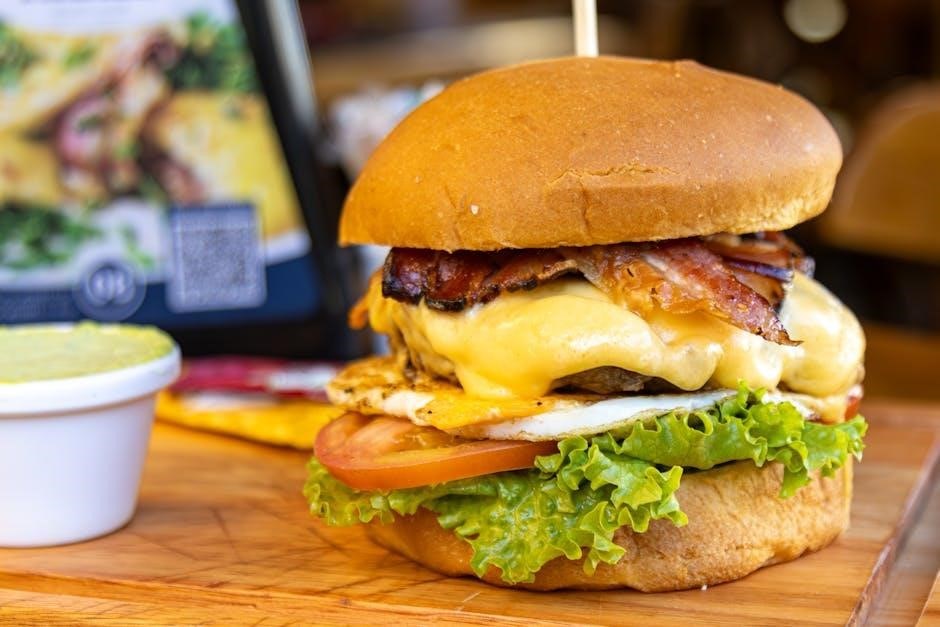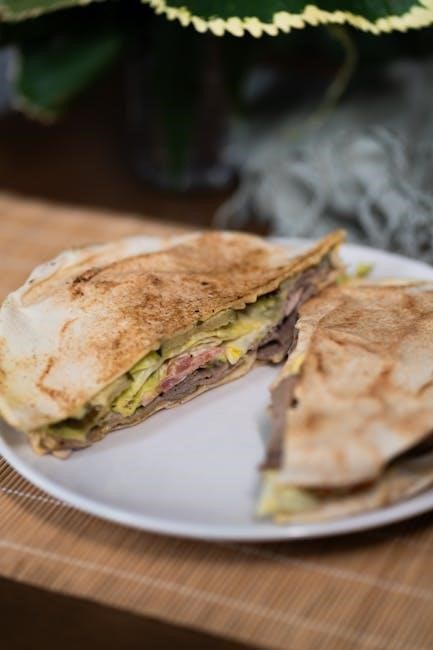The Holden Colorado Workshop Manual is a comprehensive guide for DIY repairs and maintenance, offering detailed instructions, illustrations, and specifications for optimal vehicle care. Free PDF downloads are available for various models, ensuring accessibility for all RG Colorado owners seeking to perform repairs efficiently.
Overview of the Holden Colorado RG Series
The Holden Colorado RG series, produced from 2012 to 2017, is a robust pickup truck designed for both on-road comfort and off-road durability. Known for its powerful engine options, including diesel variants, and versatile transmission choices, the RG series has become a favorite among utility vehicle enthusiasts. Available in multiple cab styles—Regular, Extended, and Crew—the Colorado RG caters to diverse needs, from work to family use. Its 4×2 and 4×4 drivetrains ensure adaptability to various terrains. The RG series also features advanced safety systems and modern interior amenities, making it a practical choice. Owners and DIY enthusiasts benefit from the availability of detailed workshop manuals, which provide comprehensive guidance for maintenance, repairs, and upgrades, ensuring optimal vehicle performance and longevity.
Importance of a Workshop Manual for Vehicle Maintenance
A workshop manual is indispensable for effective vehicle maintenance, providing detailed instructions and illustrations to guide through complex repairs. It ensures adherence to manufacturer specifications, essential for reliability and safety. The manual offers step-by-step instructions, benefiting both DIY enthusiasts and professional mechanics. Access to accurate technical information prevents costly mistakes and ensures proper diagnosis and repair. Free PDF downloads enhance accessibility, allowing owners to maintain their vehicles efficiently. Regular maintenance, as outlined in the manual, prolongs the vehicle’s lifespan and performance. Without it, reliance on incomplete online information can lead to improper repairs. Thus, a workshop manual is crucial for anyone aiming to keep their Holden Colorado in optimal condition, ensuring safety and longevity through proper maintenance practices.

Key Features of the Holden Colorado Workshop Manual

The Holden Colorado Workshop Manual offers detailed repair instructions, comprehensive illustrations, and manufacturer specifications. It includes wiring diagrams, maintenance schedules, and torque specifications, ensuring precise and safe repairs for all models.
Detailed Repair and Service Instructions
The Holden Colorado Workshop Manual provides step-by-step repair and service instructions, covering everything from basic maintenance to complex overhauls. Each procedure is detailed with precision, ensuring clarity for both novice and experienced mechanics. Topics include engine repair, transmission service, and electrical system diagnostics. The manual also offers troubleshooting guides to help identify and resolve common issues quickly. With clear, actionable instructions and practical advice, it empowers owners to perform repairs confidently. Whether replacing brakes, adjusting valves, or servicing the suspension, the manual delivers comprehensive guidance. Its detailed approach ensures that all repairs are done safely and efficiently, adhering to manufacturer standards. This makes it an indispensable resource for maintaining and restoring the Holden Colorado to optimal condition.
Comprehensive Illustrations and Diagrams
The Holden Colorado Workshop Manual is enriched with detailed illustrations and diagrams that visually guide users through complex repair processes. These visuals are essential for understanding component locations, system layouts, and proper tool usage. From engine schematics to wiring diagrams, the manual ensures clarity, reducing confusion and errors. High-resolution images and exploded views provide a clear understanding of assembly and disassembly procedures. This visual support complements the written instructions, making it easier for DIY enthusiasts and professionals to follow along. The inclusion of these resources enhances the manual’s effectiveness, ensuring that repairs are executed accurately and efficiently. With such comprehensive visual aids, the manual becomes an invaluable tool for anyone working on their Holden Colorado.
Manufacturer Specifications and Technical Information
The Holden Colorado Workshop Manual provides precise manufacturer specifications and technical details, ensuring repairs are performed to factory standards. It includes torque values, fluid capacities, and service intervals tailored to specific models. The manual details manufacturer-recommended tools and procedures, aligning with what authorized workshops use. Technical information covers engine, transmission, and electrical systems, offering clarity for complex tasks. This ensures owners can maintain their vehicles accurately, preventing potential damage from incorrect procedures. The manual’s technical accuracy makes it a reliable resource for both DIY enthusiasts and professional mechanics, guaranteeing adherence to Holden’s engineering standards. This level of detail ensures that every repair or maintenance task is executed with precision and reliability.
Wiring Diagrams for Electrical Systems
The Holden Colorado Workshop Manual includes detailed wiring diagrams, essential for diagnosing and repairing electrical system issues. These diagrams provide a clear visual representation of the vehicle’s wiring layout, including circuits, connectors, and components. They cover systems such as lighting, alarms, and electronic control units, enabling users to trace faults and resolve problems efficiently. The diagrams are precise, ensuring accurate troubleshooting and repairs. This resource is invaluable for both amateur mechanics and professionals, simplifying complex electrical work. By following the diagrams, users can avoid costly mistakes and ensure their electrical systems function correctly. The manual’s wiring diagrams are a key tool for maintaining and upgrading the Colorado’s electrical components effectively.
Scheduled Maintenance and Service Intervals
The Holden Colorado Workshop Manual provides detailed scheduled maintenance and service intervals to ensure optimal vehicle performance and longevity. These intervals outline essential tasks such as oil changes, tire rotations, and filter replacements, tailored to the Colorado’s specifications. Regular adherence to these schedules helps prevent wear and tear, reducing the risk of major repairs. The manual includes a clear timeline for maintenance, making it easy to track and follow. By following the recommended service intervals, owners can maintain their vehicle’s efficiency, reliability, and safety. This section is crucial for DIY enthusiasts and professionals alike, ensuring the Colorado remains in prime condition throughout its lifespan.

Model-Specific Information
The Holden Colorado Workshop Manual provides detailed information for specific models, including the 2012-2017 and 2008-2012 Colorado, as well as variations of the RG series.
Holden Colorado 2012-2017 Models
The Holden Colorado Workshop Manual for 2012-2017 models provides detailed repair and service instructions, including comprehensive technical specifications and maintenance schedules. Free PDF downloads are available, offering step-by-step guidance for DIY repairs and maintenance. The manual covers all aspects of vehicle care, from basic servicing to complex overhauls, ensuring owners can address issues confidently. It includes wiring diagrams, torque specifications, and operating fluid recommendations, tailored to the RG series. Whether you own a Regular Cab, Extended Cab, or Crew Cab, this manual offers precise information for 4×2 and 4×4 configurations. Instant downloads are accessible, making it easier for enthusiasts and mechanics to keep their vehicles in optimal condition without costly dealership visits.
Holden Colorado 2008-2012 Models
The Holden Colorado Workshop Manual for 2008-2012 models is a vital resource for owners seeking to maintain and repair their vehicles. Free PDF downloads are available, offering detailed instructions for servicing, repairs, and troubleshooting. This manual covers the RC series, providing comprehensive guidance on maintenance schedules, torque specifications, and operating fluids. It includes wiring diagrams and step-by-step procedures for common repairs, such as oil changes and brake system overhauls. Designed for both DIY enthusiasts and professional mechanics, the manual ensures accurate and efficient repairs. With instant access to downloadable content, owners can address issues without delays, keeping their Holden Colorado in peak condition. This resource is indispensable for anyone looking to save time and money on vehicle maintenance.
RG Series Variations and Upgrades
The RG series of the Holden Colorado offers various model variations and upgrades, each tailored to specific needs. Free PDF downloads of the workshop manual provide detailed insights into these differences, ensuring owners can perform accurate repairs. The manual covers upgrades such as engine enhancements, suspension modifications, and interior improvements. It also includes guidance on maintaining both 4×2 and 4×4 drivetrains, as well as crew cab and extended cab configurations. Whether addressing mechanical upgrades or electrical system modifications, the manual offers clear, model-specific instructions. This makes it an essential resource for optimizing performance and customization. By following the manual’s guidelines, owners can ensure their RG Colorado remains reliable and tailored to their preferences, whether for off-road adventures or daily driving.

Downloading the Holden Colorado Workshop Manual
The Holden Colorado Workshop Manual is available for free download in PDF format, covering models from 2012-2017. Access comprehensive repair guides instantly via authorized dealers or repair shops.
Free PDF Downloads for Holden Colorado Manuals
Obtaining a free PDF download of the Holden Colorado Workshop Manual is straightforward, with versions available for models from 2008 to 2017. These manuals provide detailed repair instructions, diagrams, and technical specifications, ensuring that owners can perform maintenance and repairs with ease. The PDF format allows users to access the manual from any device, making it a convenient resource for DIY enthusiasts. Additionally, the manuals are regularly updated to include the latest factory specifications and troubleshooting guides, ensuring accuracy and relevance. By downloading these resources, Holden Colorado owners can save time and money while keeping their vehicles in optimal condition. This accessibility has become a vital resource for the Holden Colorado community, fostering independence and confidence in vehicle maintenance.
Authorized Dealerships and Repair Shops
For Holden Colorado owners seeking official support, authorized dealerships and repair shops remain the most reliable sources for genuine workshop manuals and expert guidance. These establishments provide access to verified technical documents and factory-approved repair procedures, ensuring accuracy and compliance with manufacturer standards. While free PDF downloads are convenient, authorized dealerships offer additional benefits, such as personalized assistance and access to specialized tools. Repair shops affiliated with Holden also ensure that all maintenance and repairs align with the vehicle’s specifications, minimizing risks and extending the lifespan of the Colorado. For owners who prefer professional oversight, these authorized centers are the go-to option for reliable and safe vehicle care.
Instant Download Options for Convenience
In today’s digital age, instant download options for the Holden Colorado Workshop Manual have revolutionized access to repair and maintenance information. Online platforms now offer PDF versions of the manual, allowing users to download them immediately after purchase. This eliminates the need for physical copies or lengthy delivery times, providing immediate access to critical information. Websites specializing in automotive manuals ensure that these downloads are compatible with various devices, making it easy to reference the manual on a computer, tablet, or smartphone. Additionally, instant downloads often come with comprehensive search functions, enabling quick navigation to specific sections or procedures. This convenience is particularly beneficial for DIY enthusiasts and mechanics who require swift and efficient access to detailed instructions and diagrams. By streamlining the process, instant downloads have become an essential resource for Colorado owners worldwide, ensuring they can tackle repairs and maintenance with confidence and precision.

Using the Workshop Manual for DIY Repairs
The Holden Colorado Workshop Manual provides clear, step-by-step instructions and detailed photos, enabling DIY enthusiasts to perform maintenance and repairs with confidence and precision. Free PDF downloads ensure easy access to comprehensive guides for troubleshooting and fixing common issues, empowering car owners to take control of their vehicle’s upkeep.
Step-by-Step Instructions for Common Repairs
The Holden Colorado Workshop Manual offers detailed step-by-step guides for common repairs, ensuring clarity and ease of understanding. From routine maintenance tasks like oil changes to complex procedures such as engine overhauls, the manual provides precise instructions. Visual aids like photographs and diagrams complement the text, making it easier to follow along. Troubleshooting sections help identify and resolve issues quickly, while repair procedures are broken down into manageable steps. This approach empowers both novice and experienced DIYers to tackle repairs confidently. The manual’s practical focus ensures that users can address problems efficiently, saving time and money. Free PDF downloads of the manual make it accessible for everyone to benefit from these comprehensive guides.
Tools and Equipment Required for Maintenance
Maintaining your Holden Colorado requires the right tools and equipment to ensure safety and efficiency. The workshop manual outlines essential tools like wrenches, screwdrivers, and pliers, along with specialized equipment such as torque wrenches for precise bolt tightening. Socket sets are crucial for various repairs, while air compressors and hydraulic jacks aid in more complex tasks. The manual also specifies the need for protective gear like gloves and safety glasses. For DIYers, having a well-stocked toolbox is vital, as it enables quick access to necessary items. The guide provides a detailed list of tools, ensuring you’re prepared for any repair or maintenance task. This preparation helps avoid delays and ensures work is done correctly, adhering to manufacturer standards.
Troubleshooting Common Issues
Troubleshooting common issues in your Holden Colorado is made easier with the workshop manual, which provides a comprehensive guide to identifying and resolving problems. The manual includes detailed step-by-step instructions and diagrams to help diagnose issues such as engine performance problems, electrical faults, and transmission concerns. Users can quickly identify symptoms and pinpoint the root cause of issues, ensuring repairs are done efficiently. The guide also covers common faults specific to the RG series, such as coolant leaks or dashboard warning lights. By following the manual’s troubleshooting procedures, DIYers can save time and avoid unnecessary repairs. This section is invaluable for maintaining your vehicle’s health and ensuring it runs smoothly for years to come.

Technical Specifications and Guidelines
The manual provides detailed torque specifications, operating fluids, and guidelines for engine and transmission services, ensuring accurate repairs and maintenance for your Holden Colorado.
Torque Specifications for bolts and fasteners
Torque Specifications for Bolts and Fasteners
The Holden Colorado Workshop Manual provides precise torque specifications for bolts and fasteners, ensuring proper assembly and preventing damage to components. These specifications are categorized by engine type, transmission, and drivetrain, making it easy to reference during repairs or maintenance. For instance, the manual details the correct torque values for cylinder head bolts, wheel nuts, and suspension components. By adhering to these guidelines, you can maintain the integrity of your vehicle’s structure and performance. The manual also includes charts and tables for quick lookup, allowing you to apply the correct torque settings efficiently. This section is essential for both novice and experienced mechanics to ensure accuracy and safety in every repair. Accurate torque application is critical to avoid costly repairs and ensure long-term reliability.
Operating Fluids and Lubricants
The Holden Colorado Workshop Manual provides detailed information on the correct operating fluids and lubricants required for your vehicle. It specifies the recommended engine oil viscosity, transmission fluid type, coolant mixture, and brake fluid standards. Proper fluid selection ensures optimal performance, prevents corrosion, and avoids damage to critical components. The manual also outlines fluid capacities for different models and engine types, making it easier to refill or replace fluids accurately. Regular fluid checks and changes are emphasized to maintain the longevity of your vehicle. By following the guidelines, you can ensure your Holden Colorado runs smoothly under various driving conditions. Always refer to the manual for the correct specifications to avoid using incompatible fluids, which could lead to serious mechanical issues.
Transmission and Engine Service Procedures
The Holden Colorado Workshop Manual provides detailed procedures for servicing and maintaining the transmission and engine. It includes step-by-step instructions for oil changes, filter replacements, and torque specifications for critical components. The manual also covers troubleshooting common issues, such as rough idling or transmission slippage, and offers solutions to address them. For more complex tasks, such as clutch replacements or timing belt adjustments, clear diagrams and instructions guide you through the process. Ensuring your engine and transmission are well-maintained is crucial for performance and longevity. Always follow the recommended service intervals and specifications to avoid costly repairs. Proper servicing helps maintain fuel efficiency, reduce emissions, and keep your vehicle running smoothly for years. Regular checks and timely interventions are key to preventing major mechanical failures.

Legal and Safety Considerations

Legal and Safety Considerations
Always adhere to safety precautions when performing DIY repairs. Ensure compliance with manufacturer guidelines to avoid legal issues and ensure your work meets quality standards.
Copyright and Usage Rights for the Manual
The Holden Colorado workshop manual is protected under copyright laws, and its content cannot be reproduced or distributed without authorization. Downloading the manual for personal use is permitted, but sharing or selling it without permission is prohibited. Users must adhere to the terms outlined in the document to avoid legal consequences. Modifications or commercial use of the manual without explicit consent from the copyright holder are strictly prohibited. Respecting these rights ensures continued access to valuable resources for vehicle maintenance and repair. Always verify the source of the manual to ensure it is legitimate and compliant with intellectual property laws. Holden and Isuzu D-Max are registered trademarks of their respective owners.
Safety Precautions for DIY Repairs
Before starting any DIY repair, ensure a safe working environment to prevent accidents. Always disconnect the battery and wear protective gear such as gloves and safety glasses. Follow the manual’s instructions precisely to avoid damage to the vehicle or injury. If a procedure seems unclear, consult professional assistance. Never work under a vehicle without proper support, and ensure all tools and equipment are in good condition. Keep flammable materials away from the workspace and be cautious with electrical systems. Adhering to these precautions helps ensure a safe and successful repair process for your Holden Colorado. Regularly review the manual’s safety guidelines to stay informed and proactive in maintaining a secure workspace.
Compliance with Manufacturer Recommendations
Adhering to manufacturer recommendations is crucial for maintaining your Holden Colorado’s performance and warranty. The workshop manual outlines specific guidelines for repairs, ensuring compatibility with original parts and systems. Always use approved tools and materials to meet factory standards. Ignoring these recommendations can lead to suboptimal repairs and potential safety hazards. Regularly updating your knowledge with the latest manual revisions ensures compliance with any changes in technical specifications. By following the manufacturer’s advice, you preserve your vehicle’s reliability and longevity, making DIY repairs both effective and responsible. Compliance also helps prevent voiding warranties and ensures your Colorado operates within its designed parameters, providing years of dependable service.

Additional Resources and Support
Online forums, authorized service centers, and supplementary guides provide extra assistance for Holden Colorado owners, ensuring comprehensive support beyond the workshop manual.
Online Communities and Forums for Holden Colorado Owners
Online forums and communities dedicated to Holden Colorado owners serve as invaluable resources for sharing experiences, troubleshooting, and accessing repair guides. These platforms often feature discussions on DIY repairs, maintenance tips, and resources like the RG Colorado workshop manual PDF free download. Members frequently share their expertise, providing real-time advice and solutions to common issues. Many forums also host sections dedicated to model-specific information, such as the 2012-2019 RG series, ensuring relevance for owners seeking targeted guidance. By participating in these communities, Holden Colorado enthusiasts can gain insights, avoid costly mistakes, and connect with others who have firsthand experience with their vehicles. These forums complement the workshop manual, offering a dynamic and interactive support network.
Authorized Service Centers and Expert Advice
For Holden Colorado owners, authorized service centers provide professional expertise and reliable repairs, ensuring adherence to manufacturer standards. These centers employ certified technicians who utilize genuine parts and follow procedures outlined in the RG Colorado workshop manual. Owners can access expert advice for complex issues, complementing the guidance found in free PDF downloads. Regular servicing at these centers helps maintain vehicle performance and warranty compliance. Additionally, many centers offer diagnostic tools and specialized knowledge, addressing specific concerns such as transmission repairs or electrical system troubleshooting. By combining the detailed information from the workshop manual with professional guidance, Colorado owners can ensure their vehicles receive the best care, enhancing longevity and reliability.
Supplementary Guides and Manuals
Supplementary guides and manuals complement the Holden Colorado workshop manual, offering additional resources for specialized tasks and advanced diagnostics. These include part catalogs, diagnostic troubleshooting guides, and region-specific repair manuals tailored for different markets. Many of these resources are available as free PDF downloads, ensuring accessibility for DIY enthusiasts and professional mechanics alike. They cover topics such as advanced electrical system diagnostics, transmission overhaul procedures, and detailed engine repair instructions. Supplementary manuals often include manufacturer-specific tools and techniques, providing a more comprehensive approach to vehicle maintenance. By leveraging these resources alongside the primary workshop manual, Holden Colorado owners can tackle complex repairs with confidence. These guides are particularly useful for addressing model-specific variations and upgrades, ensuring optimal performance and longevity of the vehicle. Their availability in digital formats makes them easily accessible for instant reference, enhancing the overall repair and maintenance experience.
The Holden Colorado Workshop Manual is essential for DIY and professional repairs. Download it for free to ensure your vehicle is well-maintained and runs smoothly.
Final Thoughts on the Importance of the Workshop Manual
The Holden Colorado Workshop Manual is an indispensable resource for every vehicle owner. It empowers users with detailed guidance for maintenance, repairs, and troubleshooting, ensuring optimal performance. By following the manual, owners can save costs, enhance safety, and maintain their vehicle’s longevity. The availability of free PDF downloads makes it accessible to everyone, fostering a culture of DIY excellence. Whether addressing routine maintenance or complex repairs, the manual serves as a trusted companion. Its comprehensive nature ensures that all aspects of vehicle care are covered, providing peace of mind and confidence. For Holden Colorado owners, this manual is a must-have tool for preserving their vehicle’s health and functionality.
Encouragement to Explore and Utilize the Manual
Exploring and utilizing the Holden Colorado Workshop Manual is highly recommended for all vehicle owners. The manual provides clear, step-by-step instructions that make DIY repairs and maintenance straightforward, even for those with limited mechanical experience. By leveraging the detailed illustrations and diagrams, users can better understand complex procedures, ensuring tasks are completed efficiently and safely. The availability of free PDF downloads eliminates accessibility barriers, allowing everyone to benefit from this valuable resource. Regular use of the manual helps prevent costly repairs and extends the vehicle’s lifespan; Whether you’re a seasoned mechanic or a DIY enthusiast, this manual is an essential tool for maintaining your Holden Colorado in peak condition. Embrace the opportunity to take control of your vehicle’s care with confidence and precision;

































